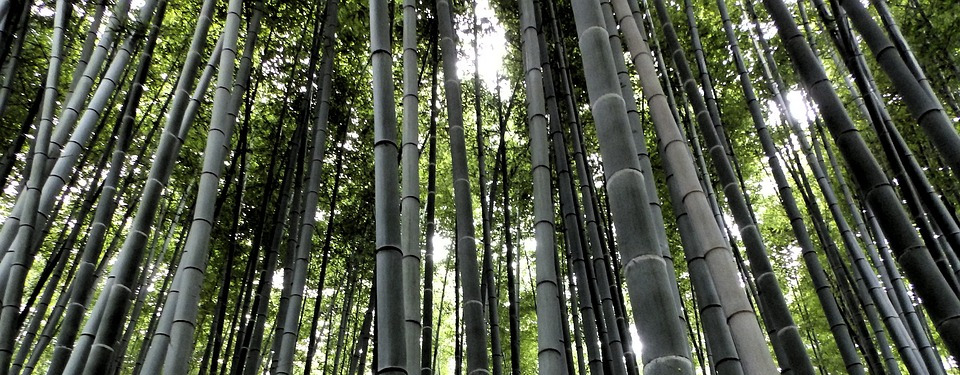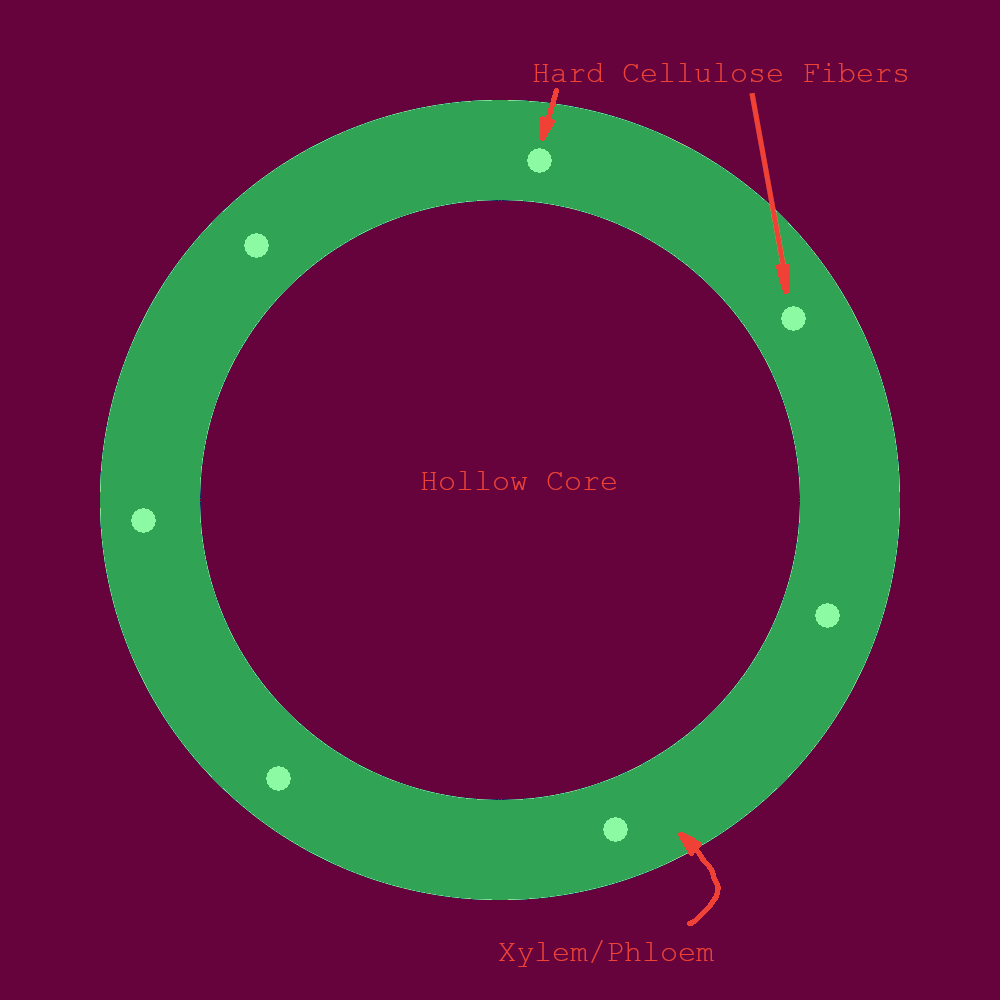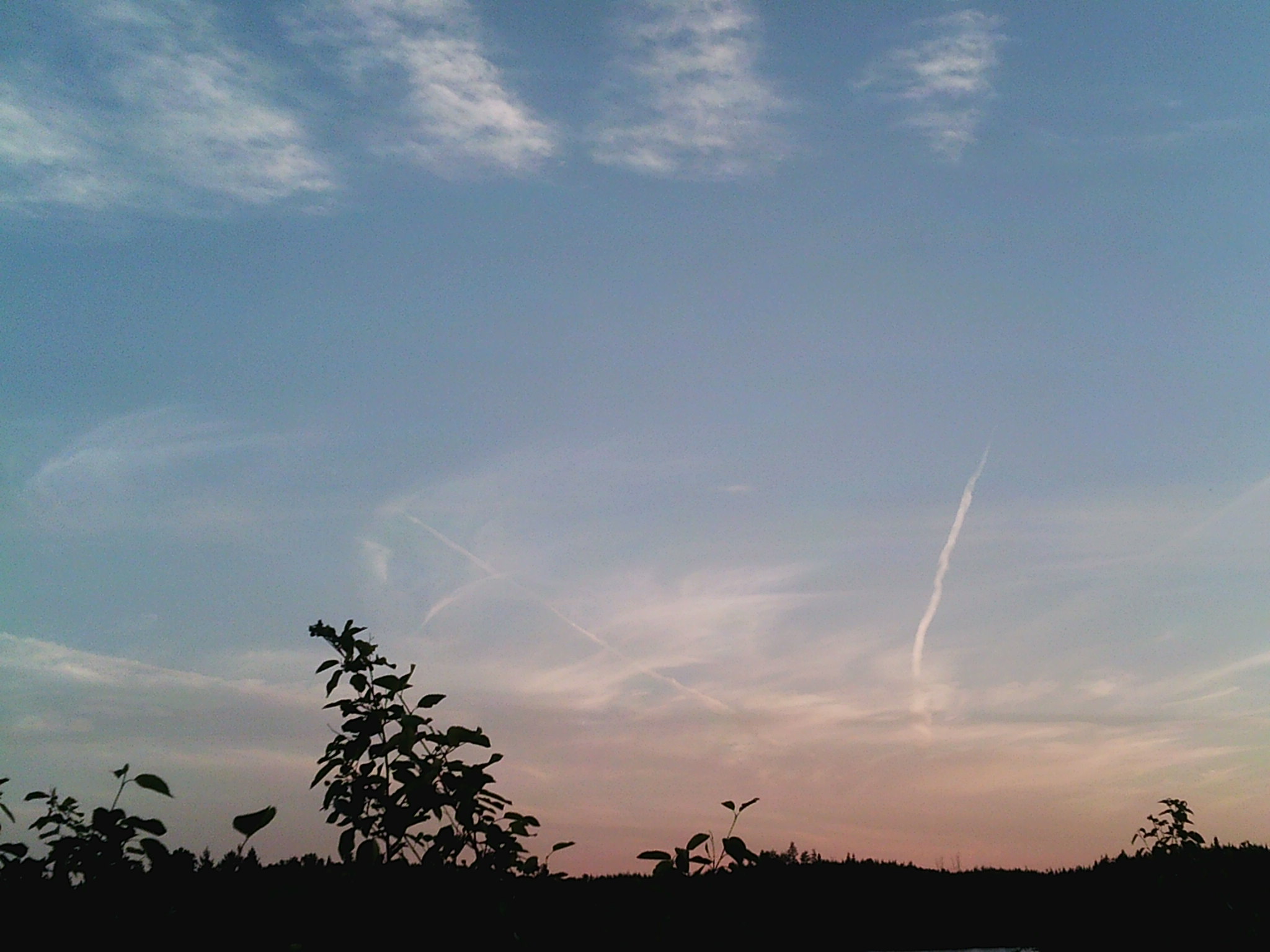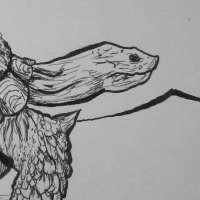Kava
A grass stronger than steel
This plant, growing much like bamboo on Earth, towers to heights of over one hundred meters in this low-gravity environment. Technically, if classified by the Linnaean system used for Earth plants, this plant would more likely fit into the "grass" classification. A sample taken back to base measured a tensile strength greater than steel.The Kava plant, also known as the Adamantine Grass, is an especially strong species of grass that is prevalent across much of the Eastern Gate Alliance within the dome. Outside the Dome, the grass grows across a landmass the size of Australia, where the Drone headquarters are located. Culturally for those within the Eastern Gate Alliance, the Kava represents adaptability as well as strength.– Preliminary Report on Flora, received by Earth 2460 A.D.
Basic Information
Anatomy
Genetics and Reproduction
Ecology and Habitats
Additional Information
Uses, Products & Exploitation
The Halora currently does not use the kava plant as a building material, but just as a skyscraper itself. Due to its incredibly hard wood and great strength, the creatures are hard-pressed to find things that could cut through the main stem.Throughout their stone-age development, the Brown Halora has used this plant. First, they would only be able to cut off smaller, side branches and leaves, to help make their nests directly on the strong, swaying grass. Later, as they began development of bronze, things changed. The kava grass was and still is sacred to many Halora. Because of this, the main development of agriculture did not infringe on much of the kava forest, and instead spread through the grassland of Central Zentland. Every time a kava was cut down to build something, there would be a large ceremony, and the times the material was mass-used is rare.– Archived Report
Geographic Origin and Distribution
Navigation
Flora (Producers): Primary Consumers: Secondary Consumers:Remove these ads. Join the Worldbuilders Guild















A gorgeous explanation as to why they're so strong! Does it bend under its own weight with time? How is its root structure—even with lower gravity I'd imagine the wind + mass would put a lot of strain on the roots so they must be quite complex or deep! Do any societies use it from building or weaponry? If so, how do they refine it?
Check out my summercamp by going here and checking out any of my gold-star articles!
It mainly has a long taproot, deep into the marshy ground, as well as branching roots to stabilize it in three dimensions. It does not bend under its own weight, but it does sway with the wind. Societies may use it, but in the early stages of development, they couldn't break it, it was so strong :) Edited.